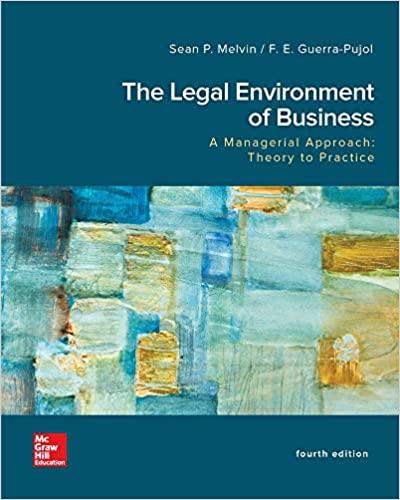Question
Eyewitness identification plays a big role in trials and often is a strong influence in the outcome of verdicts. This is despite all the problems
Eyewitness identification plays a big role in trials and often is a strong influence in the outcome of verdicts. This is despite all the problems with eyewitness testimony centering on the unreliability of human observation and memory. Defendants do have a system to try to throw out eyewitness testimony they think is unreliable, although eyewitness identification is rarely thrown out of a court.
You are a judge in a trial concerning theft. The theft took place at night, and several eyewitnesses saw the crime take place. The defense is making an argument to have the eyewitnesses' identification suppressed. Defendants can challenge eyewitness identification and have it suppressed if they are able to prove two things: that the identification was made under suggestible conditions and those conditions likely led to misidentification. The courts have ruled that just because an identification was made under a suggestible process does not mean that the identification is likely to be wrong. Courts consider this in relation to the totality of circumstances as well as the strength of the eyewitness.
Let's review a few concepts before you make a decision about this scene.
Which of the following factors would be considered strongest considering Manson and the five factors related to eyewitness observation?
observing the culprit for less than a minute
paying attention to the surroundings in addition to the culprit
the witness accurately describing the culprit after the event
a week between the crime and identification of a suspect
Step by Step Solution
There are 3 Steps involved in it
Step: 1

Get Instant Access to Expert-Tailored Solutions
See step-by-step solutions with expert insights and AI powered tools for academic success
Step: 2

Step: 3

Ace Your Homework with AI
Get the answers you need in no time with our AI-driven, step-by-step assistance
Get Started


